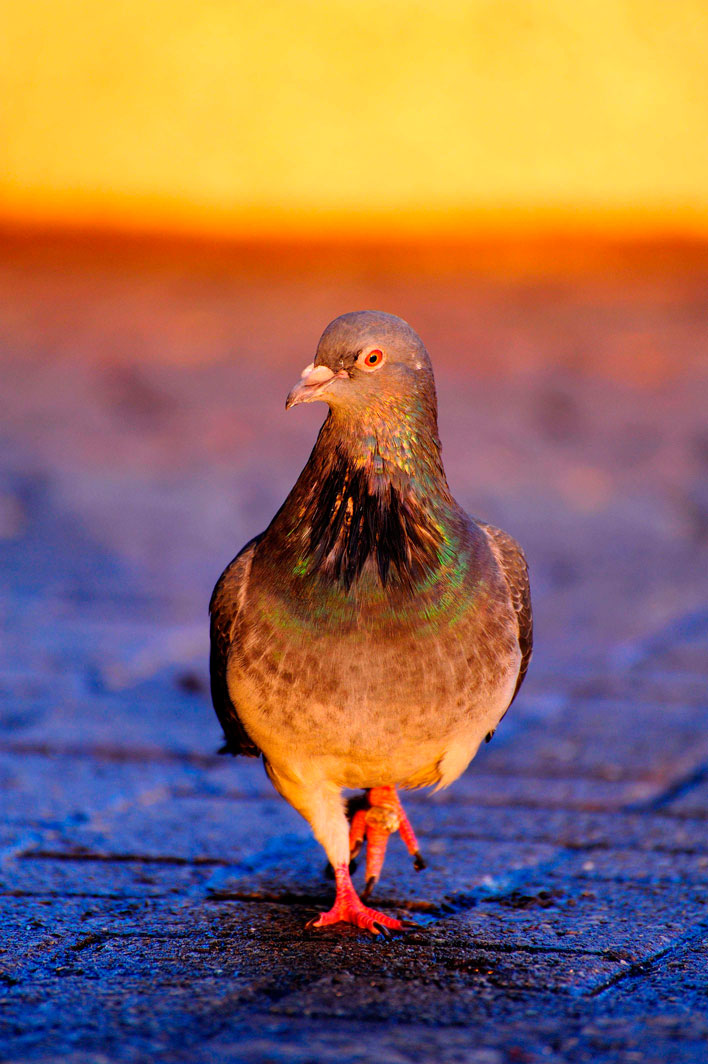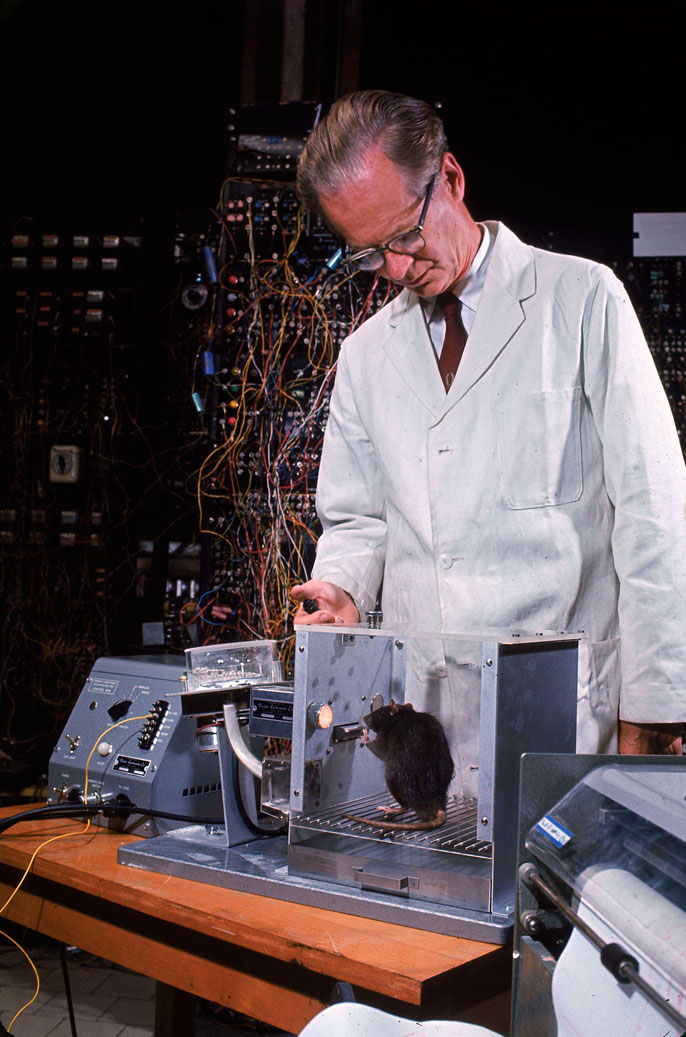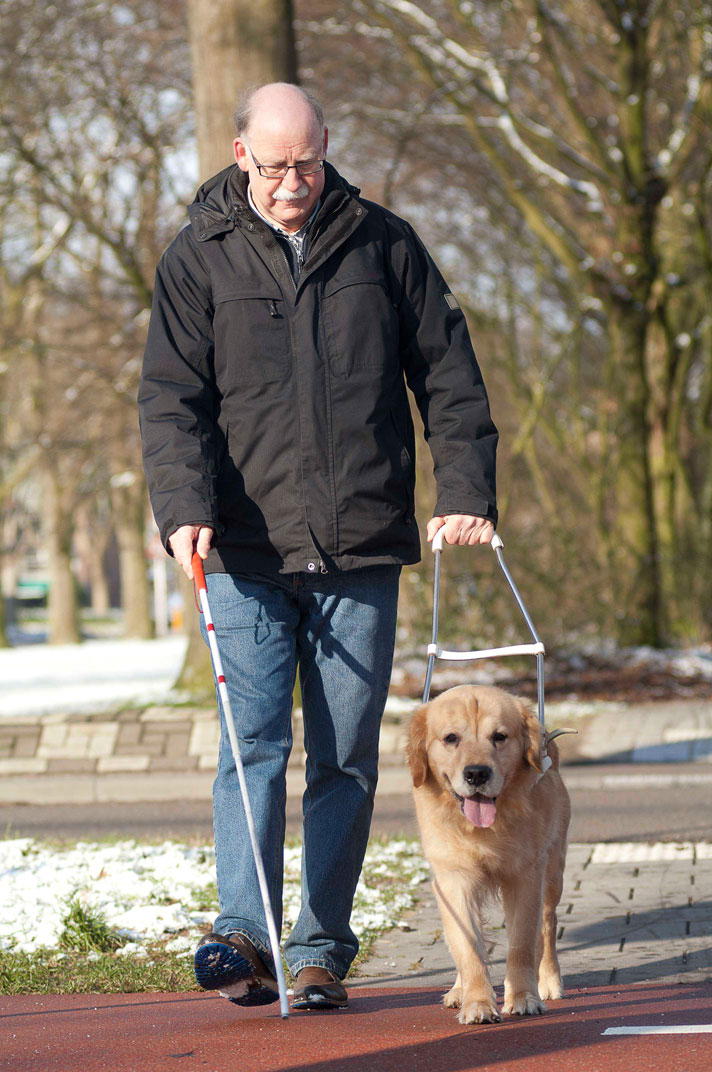Step 1: Train the Pigeon that a "Click" Signals Food
We'll begin the shaping simulation by teaching the pigeon to eat food pellets from a dispenser.
Every few seconds you should select the “Reinforcer” button. The dispenser will make a clicking noise, and one pellet will appear.
Select the “Reinforcer” button, watch what happens, repeat several times, then move to Step 2.








